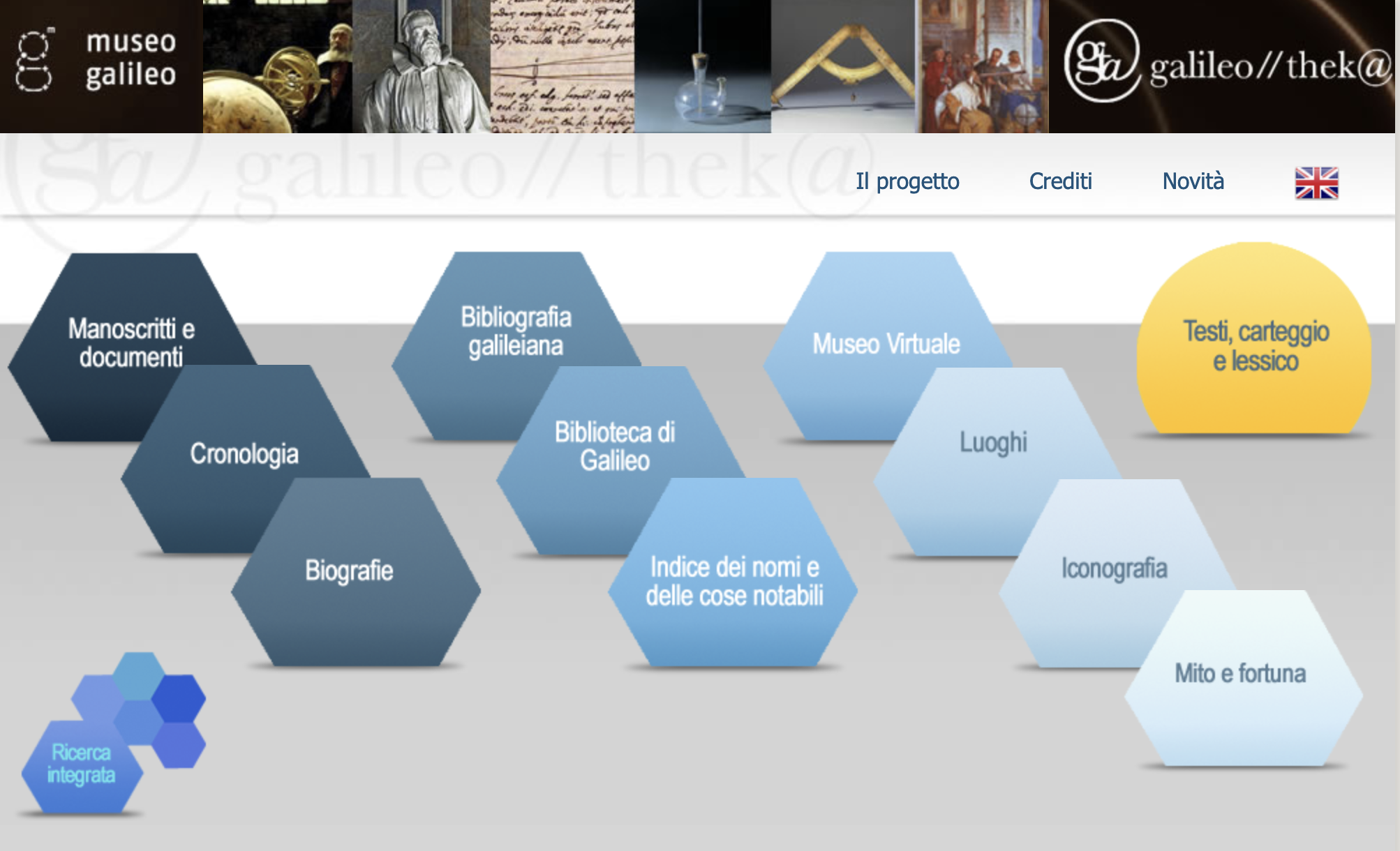Given Galileo’s prominence in Western European history, significant resources were invested early in digital project development at several institutions, however access to related full texts for computational analysis remains partial at best. The Galileo Project at Rice University (last updated in 1995) remains a touchstone for biographical and chronological information about Galileo as well as his colleagues, opponents, and family members.

Header image from Rice University’s Galileo Project. Not to be confused with Harvard’s project of the same, which is searching for extraterrestrial life.
The Galileo//thek@ hosted by the Museo Galileo (last updated in 2016) includes access to digitized primary sources, some with editorial layers, and content created by specialists in the field. Search functionality is integrated across documents such as letters, information about books in Galileo’s library, and books that he wrote. Given the magnitude of these collections and resource limitations, the editorial layers in the print material and in the digital collections are not consistent across authors. (See my forthcoming “Unediting Galileo’s Letters” for the methodological implications of these inconsistencies.)
For computational text analysis, the digitization efforts of the Museo Galileo are a rich resource, but the underlying HTML and URL structure make automated access impossible. This is where the collaborative, multi-institutional project GaLiLeO: Galileo’s Library and Letters Online was born. Working with Hannah Marcus at Harvard and a group of collaborators across staff and students at our institutions, we assembled a preliminary set of texts and editorial metadata to probe the question of the value of a computational approach to the study of Galileo.
My contribution to the project was a series of widgets written in R to put the thousands of letters of Galilean correspondence into conversation and context with the books known to have been in his library. Our target audience was a group of specialists in Galileo studies, the history of science, early modern Italy, and digital humanities. In September 2018 during a symposium at Harvard we led our colleagues through two Jupyter notebooks for exploring the materials, despite no one having used the technology before. The activities and discussions opened conversations that are still ongoing about the next digital steps for the field.
A more complete history and rationale, along with a working prototype, are now available in: “The Text Analysis Prototype for GaLiLeO: Galileo’s Library and Letters Online.” Journal of Digital History 3 (2024).
Results from working with these tools and the underlying messy textual data can be found in: “Shattering crystal with crystal: Galileo’s rhetoric, lenses, and the epistemology of metaphor.” History of Science. Online first October 2021. 61.2 (2023): 179-213.
From here:
- Explore The Interactive Shelves
- Explore The Virtual Library
- Explore Visualizing Galileo’s The Assayer
- Learn more about Large Language Models in this research
